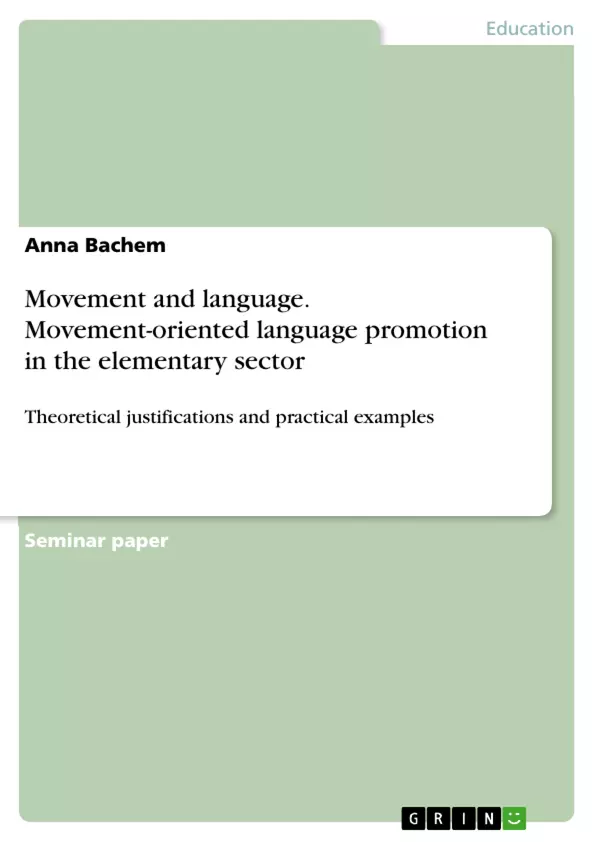In this paper, theoretical reasons for a movement-oriented language promotion are compiled. In addition to the variety of meanings and aspects of movement, the meanings and promotion-relevant aspects of language are also shown. The reader will find answers to the question: How can language be promoted through movement?
In addition, this homework provides five games for movement-oriented language promotion in the elementary sector. In addition to the instructions for each game, there is also a detailed description of the goals, divided into movement aspects and language aspects.
Inhaltsverzeichnis (Table of Contents)
- Introduction
- 1. Theoretical justifications for movement-oriented language promotion and its implications
- 2. Movement
- 2.1 Importance of movement
- 2.2 Aspects of movement
- 3. Language
- 3.1 Meaning of language
- 3.2 Aspects of language relevant to funding
- 3.3 Language development abnormalities
- 4. How can language be promoted through movement?
- 4.1 Funding opportunities
- 5. Conclusion
Zielsetzung und Themenschwerpunkte (Objectives and Key Themes)
This work explores the theoretical justifications for a movement-oriented language promotion. It examines the interconnectedness of movement and language development, highlighting the potential benefits of integrating movement-based activities into language support programs. The paper aims to provide a comprehensive understanding of the relationship between movement and language, outlining the theoretical underpinnings and practical implications of a movement-oriented approach to language development.
- Interconnection between movement and language development
- Importance of movement-based activities in language promotion
- Theoretical justifications for a movement-oriented approach
- Practical implications for language support programs
- Funding opportunities and concrete games for movement-oriented language development
Zusammenfassung der Kapitel (Chapter Summaries)
- Introduction: The introduction highlights the crucial role of language in human communication and development, emphasizing the need for language support to facilitate children's communication, social interaction, and overall growth.
- 1. Theoretical justifications for movement-oriented language promotion and its implications: This chapter examines empirical findings, smaller studies, and theoretical considerations that suggest a strong connection between movement and language development. It explores similarities between these two abilities, such as their origins in the body, their function as means of expression, and their dependence on shared investment and environmental conditions.
- 2. Movement: This section delves into the importance of movement, exploring various aspects relevant to language development. It emphasizes the role of movement in physical well-being, expression, and interaction with the environment.
- 3. Language: This chapter examines the meaning of language, discussing the aspects of language relevant to funding and addressing language development abnormalities. It highlights the complex rules governing language and the importance of language skills in communication and societal participation.
- 4. How can language be promoted through movement?: This chapter explores the potential of movement-based activities to promote language development. It examines specific funding opportunities and suggests concrete games to integrate movement into language support programs.
Schlüsselwörter (Keywords)
This work focuses on movement-oriented language promotion, exploring the relationship between movement and language development, and proposing a holistic approach to language support. Key terms include movement, language, development, language promotion, funding opportunities, and concrete games.
- Citar trabajo
- Anna Bachem (Autor), 2008, Movement and language. Movement-oriented language promotion in the elementary sector, Múnich, GRIN Verlag, https://www.grin.com/document/1177158



